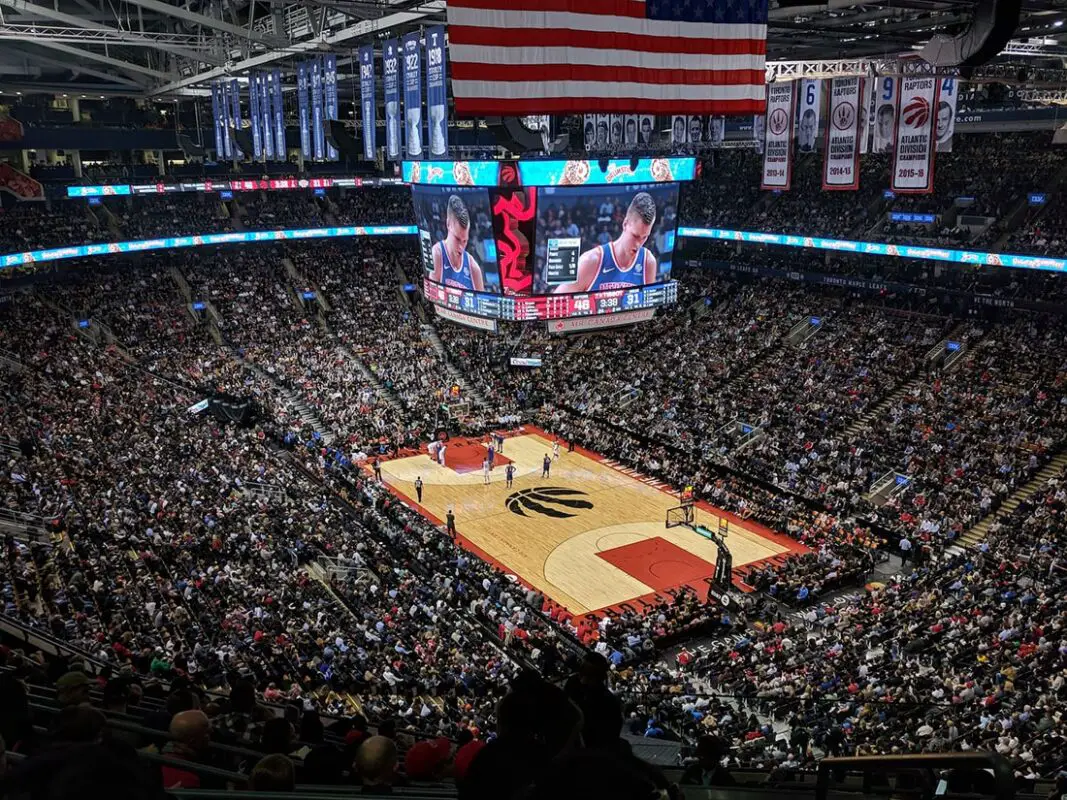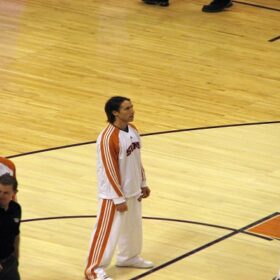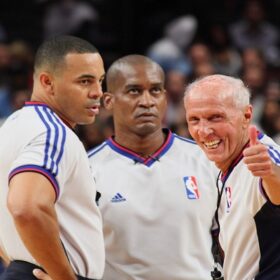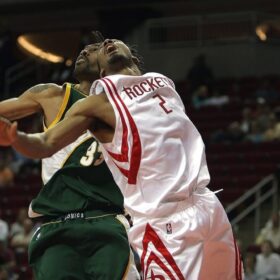The current state of the NBA features exciting, fast-paced, high-scoring extravaganzas. Double-digit leads are no longer safe, even with just a couple of minutes left on the clock.
But this wasn’t always the case before the adoption of the 24-second shot clock on April 22, 1954, which is widely regarded as the beginning of the modern era of NBA basketball.
Pre-Shot Clock Era
It should come as no surprise that the lowest-scoring game in NBA history was in the pre-shot clock era. On November 22, 1950, the Fort Wayne Pistons just held the ball for much of the game against the Minneapolis Lakers.
The strategy was to prevent the dominant player of the era, George Mikan from attacking the basket and taking over the game. Although this undoubtedly led to a very boring game, the strategy worked in a 19-18 win for the Pistons. Mikan led all players with 15 points, while no Fort Wayne player scored more than five in the win.
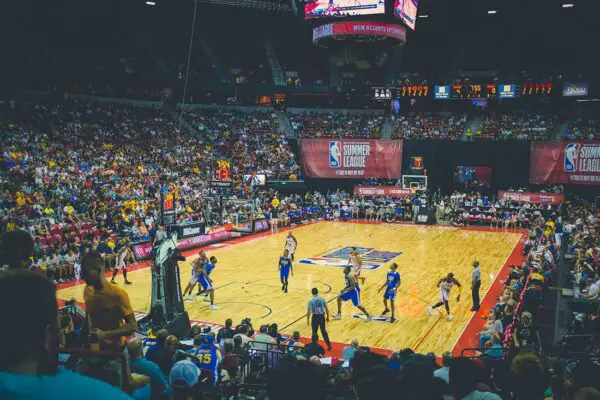
Although scores were clearly lower in the per-shot clock era, the game featuring the Pistons and Lakers was an anomaly. The next lowest-scoring games from the era were as follows:
- Washington Capitols 50-33 over the Detroit Falcons,
- Boston Celtics 47-38 over the Capitols, and
- Capitols 49-40 over the Pittsburgh Ironmen.
Post-Shot Clock Era
Fast-forward to the modern era and here are the four lowest-scoring games, none of them having occurred over the past 20 seasons.
1. Boston Celtics versus Milwaukee Hawks (February 27, 1955)
The teams not only combined for the fewest points (119) in a game in the modern era but also the fewest points in the second half (51). Boston led after the first quarter, 21-18, which proved to be the highest-scoring quarter of the game. The teams combined for 29 points in the second as Boston led 37-31.
Milwaukee evened the score at 49 after three. A four-quarter defensive battle took place with the Celtics holding Milwaukee to eight points, winning the game, 62-57.
Bob Cousey and Bob Brannum each scored 14 for the Celtics, while Bill Sharman added 11. Chuck Share led all scorers with 19 for Milwaukee, and Bob Pettit added 12. Boston finished second of four teams in the Eastern Conference with a 39-33 record, while Milwaukee was third of four teams in the Western Conference with a record of 33-39.
2. Miami Heat versus Philadelphia 76ers (February 21, 1996)
Both teams were playing far less than optimal basketball heading into this game. In fact, the Heat were 23-29, and the 76ers a dismal 10-40. A young Jerry Stackhouse and aging veteran Derrick Coleman were top players on the 76ers, a year before the Allen Iverson era began.
The Heat featured Billy Owens, Alonzo Mourning, and an overall better roster. In the first quarter, the Heat jumped out to an 18-13 lead. The 76ers bounced back in the second, outscoring the Heat, 20-10 to take a five-point lead at the half.
Miami put up only 38 points in the second half but held the 76ers to putrid shooting and only 24 points to seal the win, 66-57. Mourning led the way with 16 points and 16 rebounds, while Owens matched the 16 points and added 11 rebounds in the win.
The 76ers shot only 32 percent from the floor and 57 percent from the free-throw line as a team. Coleman scored 16 points, while Vernon Maxwell added 14 but hit just 1-of-10 from three-point range.
The Heat went on to a 42-40 record and a playoff appearance as the 8th seed, while the 76ers finished with the worst record in the conference at 18-64.

3. Boston Celtics versus Detroit Pistons (May 10, 2002)
During the 2001-02 regular season, the Pistons won 50 games and the Celtics won 49 games, finishing second and third in the Eastern Conference, respectively. Meeting in the conference semifinals, the teams split the first two games heading into Boston for game three.
Jerry Stackhouse, Ben Wallace, and Clifford Robinson were the big names on the Detroit roster, while the Celtics featured the likes of Paul Pierce, Antoine Walker, and Kenny Anderson. The score was deadlocked at 17 after the first quarter and Boston took the lead at the half, 37-33.
Neither team could throw the ball in the ocean in the third, scoring a combined 26 with the score tied at 48 entering the final quarter. The Pistons never led in the final quarter, and the Celtics held on for a 68-66 win. Pierce hit just 7-of-23 from the floor but led the Celtics with 19 points. Kenny Anderson added 17 points, Antoine Walker 16, and Tony Battie 11 points and 10 rebounds in the win.
Stackhouse paced the Pistons with 19 points, and Wallace added 12 and 21 rebounds. The team combined to shoot under 35 percent from the floor. Boston went on to win the series 4-1 before losing to the Nets in the Eastern Conference Finals.
4. Chicago Bulls versus Miami Heat (April 10, 1999)
The post-Michael Jordan era of the Bulls was in its second season and it wasn’t a pretty sight. Entering this contest against the Heat, the Bulls were 10-25, while the Heat were 22-11. Led by Tim Hardaway, Alonzo Mourning, and Jamal Mashburn, the Heat dominated the Bulls in the first quarter, leading by a score of 23-8.
The game was over by the half with the Heat up, 45-23. The lead increased to an unfathomable 34 after three quarters, 67-33. Playing all bench players in the final quarter, the Heat were outscored by a single point, still holding the Bulls to 49 points, which was the lowest score a team put up in a game in the modern era.
Hardaway scored 22 and Mourning contributed 19 in the win. The Heat shot only 41 percent from the floor but held the Bulls to a meager 23 percent from the floor. Kornel David led the Bulls with 13 points off the bench. Of the starters, only Toni Kukoc reached double digits in scoring but hit only 4-of-16 shots. How bad was the Chicago offense?
They had more turnovers (19) than field goals made (18). Chicago finished 13-37 in the strike-shortened season, while the Heat finished first in the Eastern Conference, but fell in the first round to the Knicks, who went on to the NBA Finals, losing to the Spurs.

Final Words
So those were the lowest-scoring NBA games of all time. What’s your favorite one?
To put these low scoring games in perspective, Michael Jordan averaged a league-leading 37.1 points per game in 1986-87, which edged the Pistons/Lakers 37-point total in the November 22, 1950 game.
More than 20 NBA players have reached 60 points in a game. Wilt Chamberlain (100), Kobe Bryant (81), and David Thompson (71) scored the most points in a game in league history, surpassing all by one team total in the four lowest scoring games since the adoption of the 24-second shot clock.

